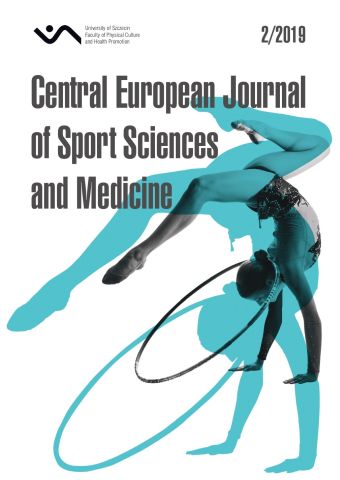
ISSN: 2300-9705
eISSN: 2353-2807
OAI
DOI: 10.18276/cej.2019.2-04




Lista wydań /
Vol. 26, No. 2/2019
Health Risks Related to Tattoo Procedure
| Autorzy: |
Aleksandra
Tuchowska

Pomeranian Medical University, Department of Aesthetic Dermatology, Poland Joanna Kruk 
University of Szczecin, Faculty of Physical Culture and Health Promotion, Poland Paulina Sagan 
Pomeranian Medical University, Department of Aesthetic Dermatology, Poland Ewa Duchnik Pomeranian Medical University, Department of Dermatology and Venereology, Poland Mariola Marchlewicz 
Pomeranian Medical University, Department of Aesthetic Dermatology, Poland |
| Słowa kluczowe: | tattoo allergic reactions infection health risk patient awareness |
| Data publikacji całości: | 2019-06-31 |
| Liczba stron: | 6 (41-46) |
Abstrakt
Nowadays, tattoos have become a very common form of body decoration. However, they carry a risk of numerous complications – ranging from allergies to cancer.
The study was divided into two parts. Adult persons, 156 men and 149 women, with one or more tattoos, participated in the first part of study. Anonymous respondents filled in the authorial questionnaire consisting of 14 questions and posted on the Internet. The second part of the study concerned of tattoo salons (n=38) employees.
The aim of the study was to examine the awareness of people who are tattooing the body about the possible risks associated with such intervention, as well as the ability to obtain information from tattoo artists and analyze client cards in terms of the most important information about tattooing. The second part of the study was devoted to the analysis of the tattoo consent forms.
Most tattoo salons clients claimed that they signed a tattoo consent and were informed about contraindications and possible complications. However, only in very rare cases allergic tests were reported. There were few cases of complications among the respondents. There is a need to educate both the clients of tattoo salons and tattooists themselves. Attention should be paid to the necessity of filling in the informed consent.
Pobierz plik
Plik artykułu
Bibliografia
| 1. | Baron, K. (2010). Zgoda pacjenta. Prokuratura i Prawo, 9, 42–57. |
| 2. | Blume, A., Janssen, P.J.M.C., Krätke, R., Serup, J.V., Andersen, I.S., Talberg, H.J., Verdier, C. (2017). Safer tattooing: overview |
| 3. | of current knowledge and challenges of toxicological assessment. Strasbourg. Council of Europe. |
| 4. | Bonadonna, L. (2015). Survey of studies on microbial contamination of marketed tattoo inks. Tattooed Skin and Health, 48, 190–195. |
| 5. | Ho, S.G., Goh, C.L. (2015). Laser tattoo removal: a clinical update. Journal of cutaneous and aesthetic surgery, 8 (1), 1–9. |
| 6. | Kaur, R.R., Kirby, W., Maibach, H. (2009). Cutaneous allergic reactions to tattoo ink. Journal of cosmetic dermatology, 8 (4), 295–300. |
| 7. | Khunger, N., Molpariya, A., Khunger, A. (2015). Complications of tattoos and tattoo removal: stop and think before you ink. Journal |
| 8. | of cutaneous and aesthetic surgery, 8 (1), 30–36. |
| 9. | Kluger, N., Koljonen, V. (2012). Tattoos, inks, and cancer. The lancet oncology, 13 (4), 161–168. |
| 10. | Kubiak, R. (2018). Sposób udzielania informacji medycznej. Palliative Medicine/Medycyna Paliatywna, 10 (2), 56–64. |
| 11. | Laux, P., Tralau, T., Tentschert, J., Blume, A., Dahouk, S.A., Bäumler, W., Bernstein, E., Bocca, B., Alimonti, A., Colebrook, H., |
| 12. | de Cuyper, C., Dähne, L., Hauri, U., Howard, P.C., Janssen, P., Katz, L., Klitzman, B., Kluger, N., Krutak, L., Platzek, T., |
| 13. | Scott-Lang, V., Serup, J., Teubner, W., Schreiver, I., Wilkniß, E., Luch, A. et al. (2016). A medical-toxicological view of tattooing. |
| 14. | The Lancet, 387 (10016), 395–402. |
| 15. | Lehner, K., Santarelli, F., Vasold, R., König, B., Landthaler, M., Bäumler, W. (2011). Black tattoo inks are a source of problematic |
| 16. | substances such as dibutyl phthalate. Contact Dermatitis, 65 (4), 231–238. |
| 17. | Lis, W. (2018). Zgoda pacjenta na czynność medyczną w polskim porządku prawnym. Zeszyty Naukowe KUL, 61 (3), 39–58. |
| 18. | Międzynarodowa Klasyfikacja Procedur Medycznych. Retrieved from: http://www.icd9.pl (14.01.2019). |
| 19. | Nowak, R. (2012). Psychologiczne aspekty tatuowania się. Roczniki Psychologiczne, 2 (15), 87–104. |
| 20. | Pajor, A.J., Broniarczyk-Dyła, G., Świtalska, J. (2015). Satysfakcja z życia, poczucie własnej wartości oraz ocena zdrowia psychicznego |
| 21. | u osób z tatuażem lub piercingiem. Psychiatria Polska, 49 (3), 559–573. |
| 22. | Rogowska, P., Szczerkowska-Dobosz, A., Kaczorowska, R., Słomka, J., Nowicki, R. (2018). Tattoos: Evaluation of knowledge about |
| 23. | health complications and their prevention among students of Tricity universities. Journal of cosmetic dermatology, 17 (1), 27–32. |
| 24. | Schreiver, I., Hutzler, C., Andree, S., Laux, P., Luch, A. (2016). Identification and hazard prediction of tattoo pigments by means |
| 25. | of pyrolysis – gas chromatography/mass spectrometry. Archives of toxicology, 90 (7), 1639–1650. |
| 26. | Serup, J., Bäumler, W. (2017). Diagnosis and therapy of tattoo complications: with atlas of illustrative cases. Basel: Karger Medical and |
| 27. | Scientific Publishers. |
| 28. | Serup, J., Kluger, N., Bäumler, W. (2015). Tattooed skin and health. Basel: Karger Medical and Scientific Publishers. |
| 29. | Wilson, W.T., O’Boyle, M., Leach, W.J. (2018). Unusual complication of a tattoo in an immunosuppressed patient. Case Reports. BMJ. |
| 30. | DOI: 10.1136/bcr-2018-224968. |
| 31. | Yongbum, K.W.O.N., Lee, D.G. (2018). Considering an Approach for Assessing the Relevance of Tattoo-associated Health Risk from an |
| 32. | Overall Toxicological Perspective. Iranian Journal of Public Health, 47 (5), 755–756. |